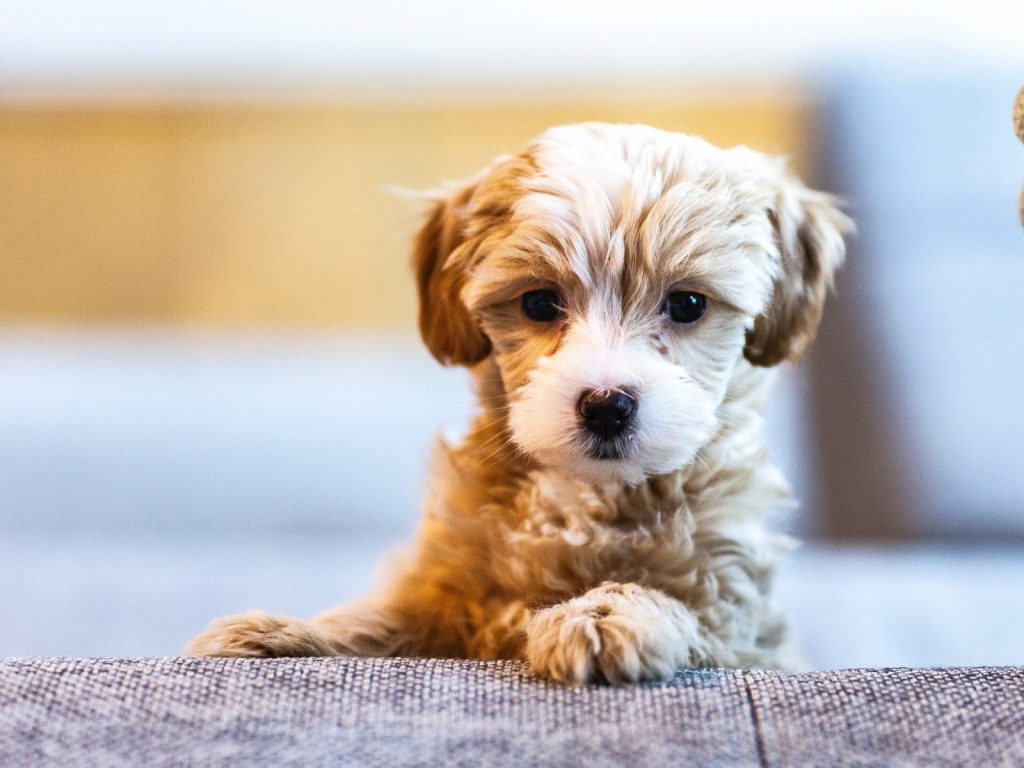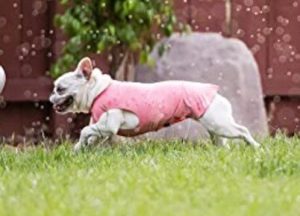Misleading websites and outright scams can fool the most vigilant puppy buyer. Our checklist “How To Avoid Puppy Mills” will help you uncover who you’re really dealing with.

Photo by Patrick Kool via Unsplash
Nearly thirty years ago, when I wanted a dog, I didn’t know how to avoid puppy mills. In fact, I was so ill-informed, I didn’t know I SHOULD avoid puppy mills or that factory breeders were “a thing.”
In our case, the puppy mill was a large barn in rural Massachusetts where a family raised dozens of dog breeds like livestock. You’d think I’d have known better. I was a lawyer, a pregnant mother of two insanely active boys, and I’d grown up with dogs.
But I didn’t know better.
When we walked into that cavernous farm building, dozens upon dozens of adorable puppies clamored for attention. My radar for trouble simply folded up and deserted me.
So we brought trouble home, in the form of “Ruby,” a six-week-old, long-haired miniature dachshund. (That should have been our first clue we’d failed at avoiding puppy mills. No reputable breeder will allow a toy breed to leave its mother at six weeks.)
Bringing Home A Puppy Mill Pup

Sick Puppy
Unlike so many stories of puppy mill dogs with horrendous health problems ranging from hip dysplasia to malformed organs, Ruby was healthy. Physically healthy, that is. However, she never, ever, ever became housebroken. From the start, we had no success with potty training. Ruby’s formative early days spent in a sawdust barn had conditioned her to pee where she stood, even, or especially, when she stood on our carpet. The only housebreaking progress she made in our fifteen years with us was learning not to pee in front of people.
Of course, I can’t entirely blame Ruby’s issues on ignorance about avoiding puppy mills, as nearly every internet list of “Dogs That Are Notoriously Difficult to Housebreak” places dachshunds near the top. Some articles theorize that dachshunds’ impressive scent abilities make them return to the scene of their prior crimes, no matter how well you’ve cleaned the evidence. Thus, Ruby’s breed, combined with her birth factory’s complete lack of socialization and sanitation, and my lack of experience, dashed any real hope we had of helping Ruby become a truly domesticated dog.
Repeated trips to the vet confirmed that she had no medical issues preventing her from holding her bladder. She just wouldn’t hold it.
I bought training books. I tried every method.
Puppy Mills and High Anxiety
We attempted crate training. Yet, Ruby’s early weeks spent in a noisy factory farm with no real human love or interaction had crippled her emotionally. She suffered separation anxiety and clear fear of enclosed spaces, and she would transform into a Tasmanian devil if crated. She tore her mouth and bloodied her face in her mad quest to gnaw her way out between the metal bars. She’d work herself into a foaming frenzy in that open-air kennel, even when we sat in the room with her. We tried using more cave-like crates, which we quickly abandoned as she hurt herself more severely trying to escape.
Housebreaking A Puppy Mill Pup
After the crate failed repeatedly, we attempted training her to use newspapers and confining her to the sunroom with a gate, which opened to our living room. That was a short-lived experiment. I won’t go into the details, as you may be eating your breakfast. Needless to say, the results of that experiment required scrubbing the entire room and giving Ruby a bath every day for the seven days we tried it.
We attempted taking her out so frequently that she couldn’t possibly have any liquid left to dribble in my house. She held it and dribbled anyway.
The Last Stand:
At the Bottom of the Stairs

Photo by Karen Hiselius via Unsplash
One night is etched vividly in my memory, though it happened well over two decades ago. Juggling a law practice and three over-scheduled kids who needed to be in three different places simultaneously, I always woke before sunrise. In those days, Ruby had taken to peeing at night on the throw rug at the bottom of the stairs. (Here, you might be rightly wondering why Ruby had the run of the house. Well, she was safest and happiest when she slept with my boys, but we couldn’t shut her in their bedroom or she’d pee on the carpet and, for good measure, destroy the door with scratching in her quest to escape confinement). In yet another desperate attempt to protect my home, I began taking her out before my 10 p.m. bedtime and then setting my alarm to wake up around 1 a.m. to take her out again.
For a week, zombie-like, I’d sleep-walk from my warm cocoon to bring her outdoors. For three days, it didn’t help any–still the rug at the bottom of the stairs would be wet when we woke up. So, I’d throw the rug into the washing machine, sanitize it to within an inch of its life, and we’d replay the scene again the next day. After a week, my 1 a.m. forays with Ruby still weren’t working, so I thought maybe it was the rug itself. I stopped putting it out, praying in the meantime that no child would take a header onto the unforgiving ceramic tile underneath.
It wasn’t the rug. She continued peeing on the tile right at the bottom of the stairs.
I’d promised myself I’d give the nightly bathroom trips at least two weeks. I theorized that seemed a reasonable time to help Ruby adjust to a new routine, where we limited her water after 8 p.m. and took her out so much she’d have nothing left for the house.
Accepting Our Fate
On the 10th day, however, I surrendered. It was 1:15 a.m., and I’d just settled back under the covers. Usually, I’d be back asleep immediately after returning Ruby to the boys’ room. But that night, something outside in the dark woods had spooked me, and my adrenaline was still pumping. Lying awake, I heard soft padding down the stairs. I stole out of bed to the upper landing, and turned on the hall light. There, at the bottom of the stairs, was Ruby, peeing on the floor, only ten minutes after I’d taken her out.
I was done.
I wanted her gone.
My moral compass and my two boys, who worshipped her, meant failure was not an option, however. She adored them, and her joyous play and unending supply of affection for them elevated her to near-sibling status in their minds. Moreover, even if I could somehow have justified tearing from them one of their best friends, no sane human would willingly take on the burden of her behavior. And, I certainly couldn’t abandon her to a rescue, as she was my responsibility.
I had been the foolish one, bringing home an animal churned out in terrible conditions. I was the one who hadn’t known how to avoid a puppy mill, I was the one who made her part of our family, and I could not abandon that commitment.

We placed washable throw rugs strategically around the house where she tended to go. We spent a shocking amount for an industrial steam cleaner, and I lost a half-hour every day erasing evidence of Ruby’s misdeeds. That horrible dance, with her leading, lasted 15 years. She never improved. Aside from this one fatal flaw, Ruby was an amazing companion and best friend to our boys. One of the few regrets in my life is that she’s the one dog I couldn’t reach. But she certainly reached my kids, and for that we will be forever grateful. All of them understand, in large part because of Ruby, the tremendous joy and responsibility of dog guardianship.
The Continuing Crimes of Puppy Mill Breeders

It was nearly twenty-five years ago that we first brought Ruby home. In today’s modern veterinary world, Ruby would likely be diagnosed with severe, generalized anxiety and maybe medication would have helped. Or maybe some amazing dog trainer could have rescued us. But even though today, puppies and adult rescues can be rehabilitated medically or through intensive training, we should not be starting the canine-human bond with an animal bred for maximum profit in an environment that encourages a “the house is your bathroom” mentality. More importantly, we must recognize the basic rights of these amazing sentient beings. We can’t allow dogs to be kept as breeding stock and to be born into factory conditions. We must arm ourselves with knowledge and learn how to avoid puppy mills. That is the only way to shut them down. Make them unprofitable because no one will buy their wares.
Our experience with Ruby is only one example. Yet, her lifetime with us could not erase the house-soiling behavior imprinted on her as a puppy in that dog factory.
When one adds the often astronomical veterinary bills to the psychological scars of owning a puppy mill dog, it’s shocking such factories can stay in business. And yet, they do. They existed thirty years ago when we adopted Ruby. And it’s likely easier for dog farms to exist now, hiding behind stock photos and smooth excuses. Social media and photoshop often lie, and they prevent potential owners from knowing what’s really behind the curtain.
Avoiding Puppy Mills
As we discovered with Ruby, puppies born into animal factories at best miss key bonding and domestication cues. At worse, they suffer physical illnesses or debilitating orthopedic weaknesses. A combination of poor genetics, substandard nutrition and stress during their mother’s pregnancy, and an environment with no concern for socialization is both inhumane and practically guarantees a dog who will face major physical and emotional health problems. Thus, avoiding puppy mills should be a top priority.
That means you must arm yourself against savvy puppy mill breeders whose facilities appear pristine but whose underbelly, if revealed, would show a substandard quality of life for the dogs trapped there. Download our e-pamphlet and checklist Avoiding Puppy Mills at the bottom of the page, and let’s put these unethical operators out of business.
If you see any condition from Avoiding Puppy Mills in a breeder you’re considering, cross them off your list in thick, permanent ink. Maybe draw that line through their name twice. Remember, you’re bringing a dog into your home and your daily life. Adding a poorly socialized or neurotic animal into your world can derail even the happiest home. You can find yourself with urine-soaked carpet or crates, destructive chewing, self-destructive escape behavior and incessant, mindless barking. Worse, you’re helping line the pockets of people who will keep the abusive cycle going.
It’s of course not only possible, but crucial, to rescue and rehabilitate dogs with such challenges. But purchasing one of these puppies is not the way to do it.
A Final Word
Don’t fall prey to the many factory dog farms out there. Learn everything you can about avoiding puppy mills. Otherwise, you’ll simply perpetuate the cruel factory model of breeding dogs and extend the suffering of every animal there. This is especially true if you wish to adopt a small or toy breed. Their size makes them easy victims of unethical businesses focused on efficient breeding. Small dogs take less food, less space, and less time to care for in factory farm conditions. So instead, take your time.
Download Avoiding Puppy Mills, our complete guide with resources and cheatsheet checklist. Then research, ask questions, and research more.
You’ll Also Love
Leave a Reply
Your email address will not be published.




